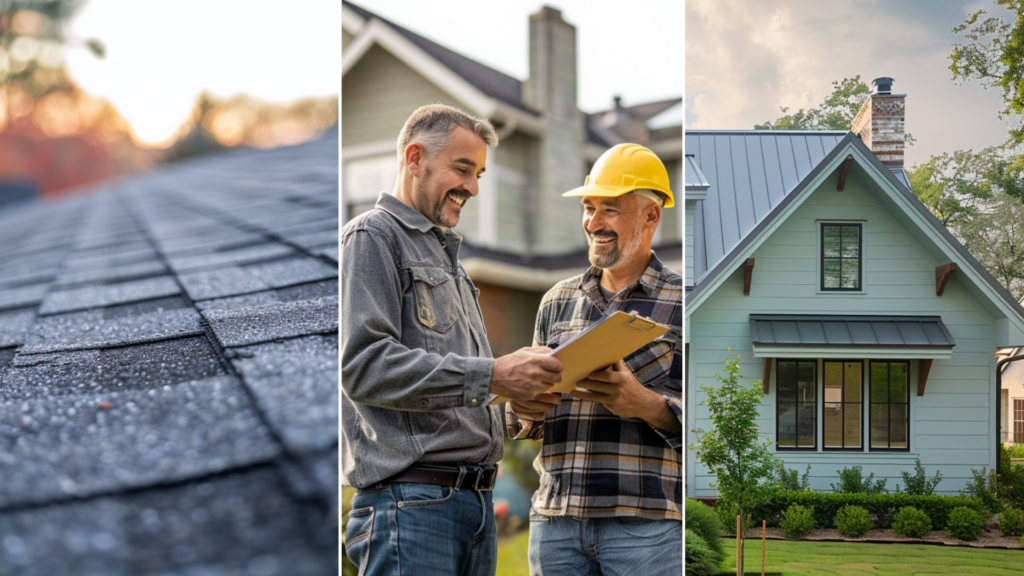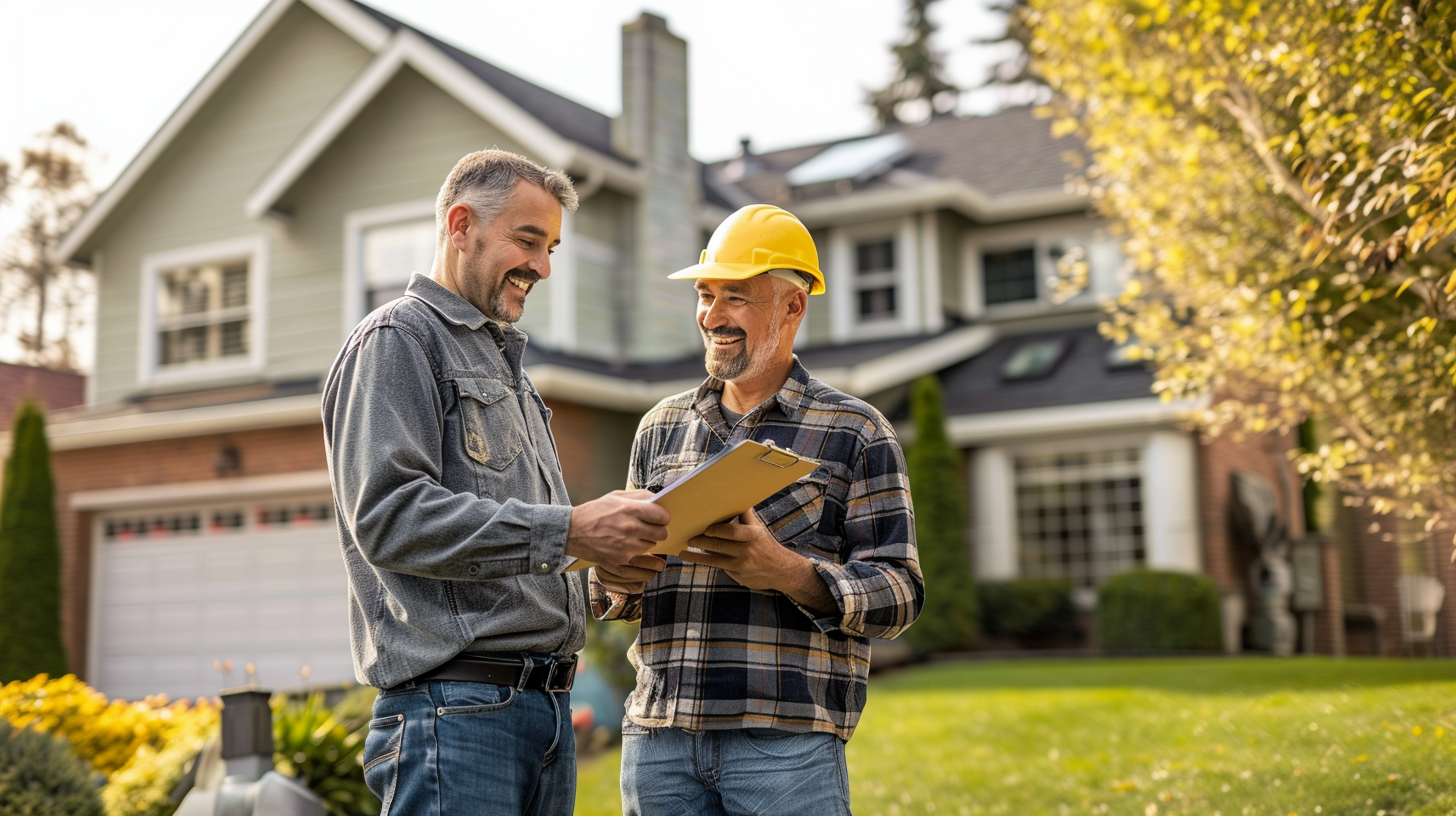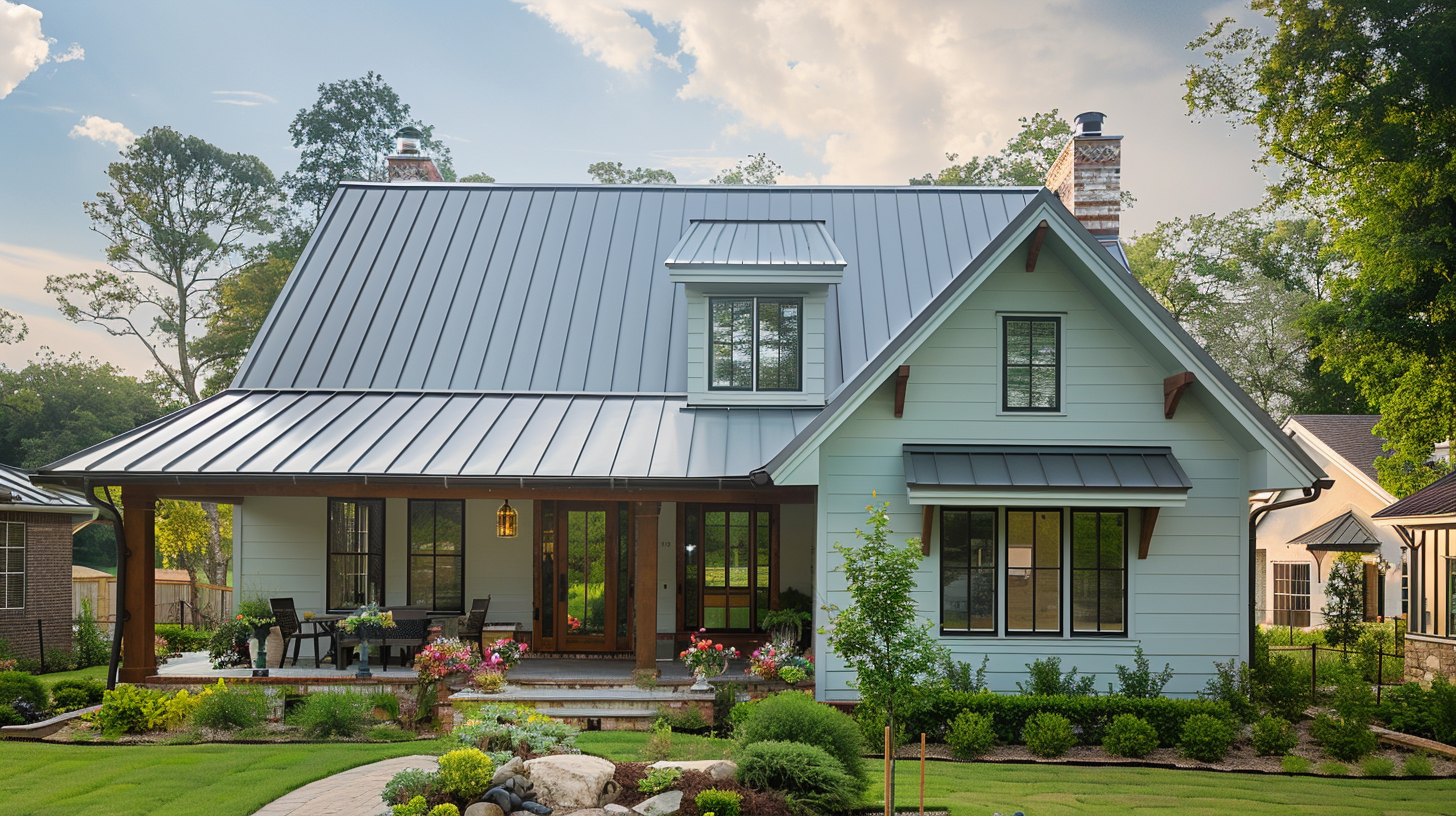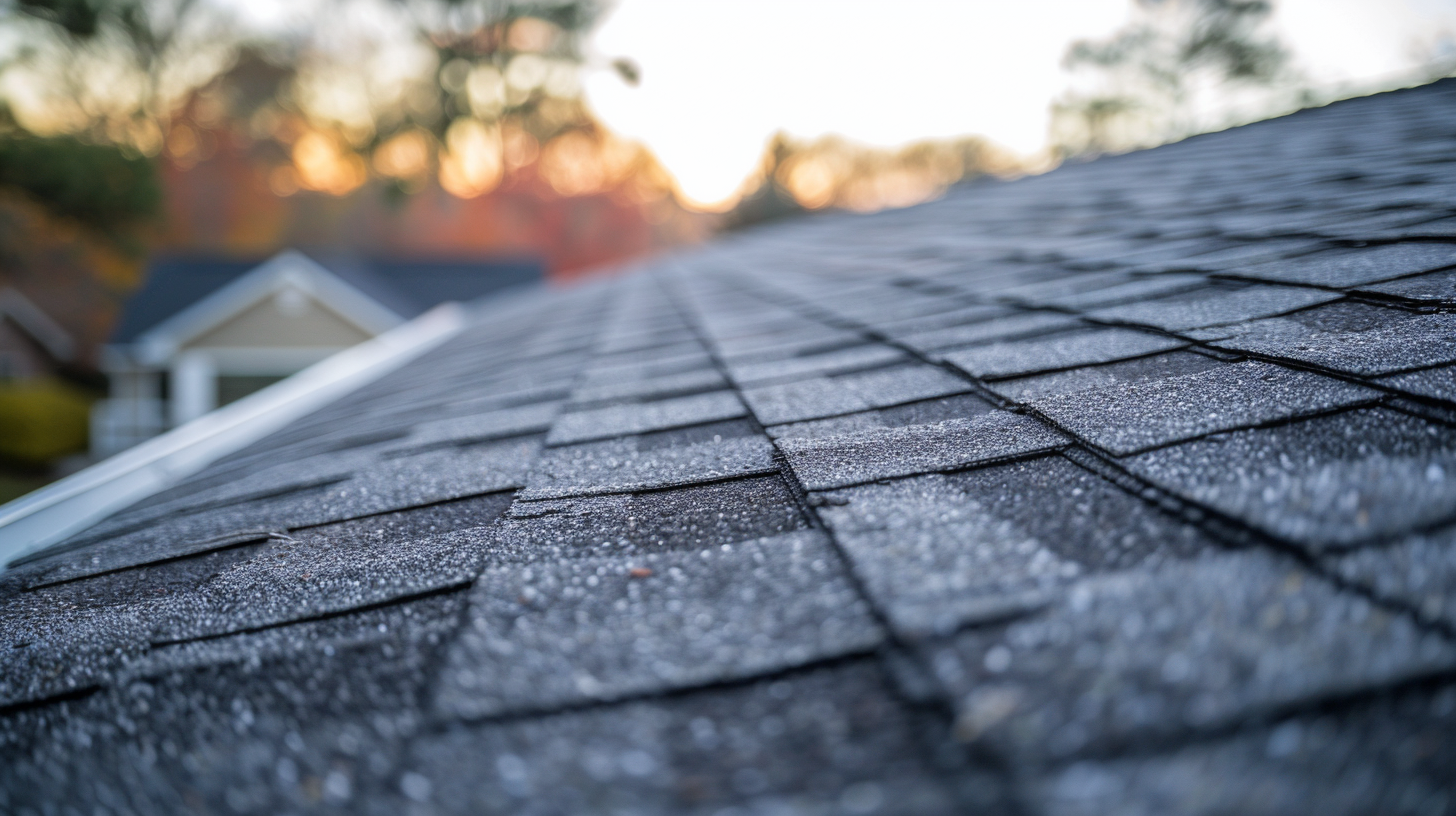Showing all posts tagged "Construction"
National - Sky Roofing Construction & Remodeling - Call (210) 942-9797
Watch video on YouTube here: https://www.youtube.com/watch?v=iEqP0wYQ_6w
via Sky Roofing Construction & Remodeling
Posted on July 23rd, 2024
National Roofing Services: Quality Workmanship Nationwide

Comprehensive Nationwide Roofing Services
National roofing contractors are ideal for projects spanning multiple locations or requiring expertise in various roofing aspects. These contractors provide comprehensive nationwide services, ensuring your project is managed efficiently and effectively, regardless of location. With a broad network of professionals and resources across the country, national roofing contractors are well-equipped to handle projects of any size and complexity, upholding the highest standards of quality and workmanship. Their extensive experience and adherence to industry regulations enable them to deliver exceptional results, from inspections and repairs to complete roof replacements. Opting for a national roofing contractor offers consistent service and peace of mind, eliminating the need to coordinate with multiple contractors.
Extensive Network of Certified Contractors
An extensive network of certified contractors is vital for delivering comprehensive nationwide roofing services within the construction industry. Through a rigorous certification process, these roofing companies bring numerous benefits and advantages. With local experts across various regions, customers can benefit from their in-depth knowledge and understanding of local regulations, weather conditions, and construction practices. This network ensures consistent quality and reliability for all roofing needs, regardless of geographical location. Moreover, the availability of certified contractors throughout the country guarantees that customers can access information and assistance easily, even for emergencies or urgent repairs. The extensive network of accredited contractors offers peace of mind, convenience, and efficiency, serving as a valuable resource and reflecting the voice of roofing professionals in national projects.
Specialized Roofing Solutions for Varied Climates
Specialized roofing solutions are essential for addressing the diverse challenges of different climates. Each region’s unique weather conditions require quality roof systems that provide optimal protection, insulation, and aesthetic appeal. Influential commercial roofing companies must tailor roofing systems to handle specific environmental factors, ensuring durability and performance. As professionals in their career in roofing, they are knowledgeable about various brands of roofing products and their suitability for different conditions. Commercial roofing requires particular attention to detail, often guided by the standards set by the association of roofing professionals. Buildings can enhance functionality and longevity by adapting roofing systems to local climate challenges. This approach protects structures and contributes to their overall visual appeal.
Nationwide Emergency Repair Services
A nationwide dependable roofing contractor offers extensive coverage and various repair services for emergency roof repairs. These contractors are equipped to handle emergencies nationwide, providing timely assistance regardless of the location. Whether repairing damaged shingle roofs, fixing leaks, or addressing structural issues with roof decks, these professionals are prepared to tackle a wide range of repairs. Their use of advanced roof technology and commitment to quality workmanship ensure that repairs are performed efficiently and effectively. Emergency response time is typically quick, ensuring necessary repairs are performed promptly to minimize further damage. With their comprehensive coverage and rapid response, nationwide roofing contractors offer peace of mind and reliable support to homeowners during roofing emergencies.

National - Roofing Excellence Across the Country - Sky Roofing Construction & Remodeling
Roofing Excellence Across the Country
Finding a contractor that offers excellent services is crucial for professional roofing. This is where national roofing contractors come into play. With their extensive reach and experience, these contractors can provide top-notch roofing solutions nationwide. Whether it’s a residential or commercial building, national roofing contractors have the expertise to handle any roofing project. They offer various services, including installation, repair, maintenance, and remodeling. The benefits of choosing a national roofing contractor include access to a larger pool of resources, consistent quality of work, and unmatched professionalism. These contractors employ experienced workers who undergo rigorous training programs and safety training to ensure they meet the highest industry standards. No matter the location, national roofing contractors ensure that every project receives the attention it deserves, providing customers with reliable and long-lasting roofing solutions they can trust.
High-Quality Materials and Workmanship
High-quality materials and workmanship are crucial for a national roofing contractor to provide durable, long-lasting roofs. One key aspect is the selection of advanced shingles, durable underlayments, and weather-resistant membranes, which contribute to the longevity and performance of the roof. This focus on the advancement of roofing ensures that each element, including standard roofing systems, plays a role in protecting the building from external factors such as harsh weather conditions and potential damage. Meticulous installation techniques are equally important, ensuring the roofing materials are properly secured and installed. Ongoing training for roofing professionals is vital to uphold the highest standards, as it keeps them updated on the latest industry practices and techniques. With a commitment to complete roofing solutions, high-quality materials, and workmanship, a national roofing contractor can deliver commercial projects that meet and exceed their client’s expectations, providing them with durable and reliable roofing solutions.
Custom Roofing Solutions for Different Regions
When it comes to roofing solutions, one size does not fit all. Regional roofing solutions are tailored to specific climates, weather conditions, and architectural styles, offering numerous benefits. For instance, weather-resistant materials like metal panels or IB roof systems often prevent leaks in areas prone to heavy rainfall. Cool roofs with reflective coatings are popular in hot and dry regions to lower energy costs. SPF and polyurethane foam roofs provide excellent insulation and energy efficiency in such climates. Architectural considerations also play a role, with different regions favoring certain styles. For example, areas with a Mediterranean or Spanish influence might opt for clay or concrete tiles. At the same time, coastal areas may choose durable materials like slate or metal panel roof systems to withstand high winds and salt corrosion. Homeowners can enjoy enhanced protection, energy efficiency, and aesthetic appeal by customizing roof system configurations to match the unique needs of different regions and relying on skilled roof system installers.

National - Commitment to Safety and Compliance - Sky Roofing Construction & Remodeling
Commitment to Safety and Compliance
A national roofing contractor prioritizes a commitment to safety and compliance by following strict OSHA guidelines and industry standards. Through regular training programs and seminars sponsored by roofing associations, these contractors ensure that their employees and subcontractors are well-educated on safety practices and OSHA requirements. This commitment to safety extends across the entire building envelope, from manufacturing to installation, and helps to guarantee the well-being of everyone involved in the process. By adhering to these practices and standards, national roofing contractors can confidently provide roofing and building materials services, knowing they take all necessary precautions to keep their team members and clients safe. This focus on safety and compliance is essential within the construction field, especially when dealing with inexperienced workers who require additional guidance. The emphasis on customer service and meticulous construction details further ensures that all projects meet high quality and safety standards.
Serving Diverse Regions with Quality Roofing
National roofing contractors can serve many regions nationwide with their high-quality roofing services. Whether it’s the hot and sunny climate of the Southwest, the harsh winters of the Northeast, or anything in between, these contractors have the expertise to install or repair steep-slope roof systems and asphalt shingle roof systems that can withstand the unique weather conditions of different regions. This ensures homeowners and businesses receive reliable, durable roofing solutions tailored to their location. Moreover, national roofing contractors often have a vast network of professionals, allowing them to efficiently and effectively complete projects in diverse regions. They also provide access to certification programs and opportunities for roofing professionals, addressing critical issues and ensuring adherence to industry standards. This means they can easily access a wide range of roofing materials and technologies, ensuring customers have plenty of options. With their ability to serve diverse regions with quality roofing, national contractors offer peace of mind and long-lasting customer protection nationwide.
Tailored Roofing Services for Urban and Rural Areas
Tailored roofing services play a crucial role in meeting the specific needs of both urban and rural areas. Understanding the distinct requirements of these environments is essential in delivering effective roofing solutions. Whether it is the architectural complexities of urban landscapes or the challenging weather conditions prevalent in rural areas, specialized services cater to the unique demands of each location. National roofing contractors can provide the expertise and resources to ensure durable and efficient systems by offering tailored roofing services. This approach not only enhances the quality and longevity of the roof but also contributes to the overall safety and aesthetics of the property. Adapting and customizing roofing solutions for urban and rural settings is instrumental in achieving customer satisfaction and establishing a solid reputation in the industry.

National - Innovative Solutions for Regional Weather Challenges - Sky Roofing Construction & Remodeling
Innovative Solutions for Regional Weather Challenges
Innovative roofing solutions are crucial for addressing the diverse and challenging regional weather conditions that homeowners may face. Extreme temperatures, high winds, heavy rain, snow, and hail can significantly impact traditional roofs. However, innovative roofing materials and techniques can help protect homes from these weather challenges. For example, advanced insulation systems can effectively regulate temperature fluctuations, reducing the strain on heating and cooling systems. Additionally, using durable and weather-resistant materials, such as impact-resistant shingles, can withstand high winds and hailstorms. Waterproofing technology also plays a vital role in preventing leaks and water damage caused by heavy rain or melting snow. By employing these innovative solutions, homeowners can ensure the longevity and resilience of their roofs, maintaining the safety and comfort of their homes despite the harsh regional weather conditions.
Dedicated Support for Residential and Commercial Projects
Having dedicated support from national contractors is crucial for residential and commercial projects. These contractors offer comprehensive support services, guiding building owners throughout the process and ensuring their specific needs are met. The support team is vital in assisting residential and commercial projects, providing valuable expertise and assistance. The support team helps homeowners select suitable materials for residential projects, offers advice on roof designs, and coordinates and coordinates project timelines. Additionally, they provide regular communication and updates to ensure a smooth and successful project.
On the other hand, for commercial projects, the support team understands the unique requirements of businesses, such as the need for minimal disruptions and compliance with building codes. They offer tailored solutions, manage project logistics, and provide technical assistance. The support team often includes members with NRCA ProCertification and affiliations with a regional association or international association, reflecting their unwavering commitment to high standards and a high level of service. With their extensive knowledge and expertise, including proficiency in installing metal wall panels, residential and commercial clients can feel confident that their roofing projects are in capable hands.
National Expertise for Your Roofing Needs
A national contractor like Sky Roofing Construction & Remodeling is your best choice when seeking top-notch roofing services. With their extensive experience and commitment to quality, they provide tailored solutions for both residential and commercial projects. Don’t hesitate to reach out for a quality roofing installation that meets your needs. Call Sky Roofing Construction & Remodeling (https://skyroofingconstructiontx.com) today at (210) 942-9797 to schedule your consultation and ensure your roof is in expert hands.
The post National Roofing Services: Quality Workmanship Nationwide appeared first on Roofing Contractor San Antonio - Sky Roofing Construction & Remodeling.
from Roofing Contractor San Antonio – Sky Roofing Construction & Remodeling https://skyroofingconstructiontx.com/national/
via Sky Roofing Construction & Remodeling
Posted on July 23rd, 2024
National Roofing Services: Quality Workmanship Nationwide

Comprehensive Nationwide Roofing Services
National roofing contractors are ideal for projects spanning multiple locations or requiring expertise in various roofing aspects. These contractors provide comprehensive nationwide services, ensuring your project is managed efficiently and effectively, regardless of location. With a broad network of professionals and resources across the country, national roofing contractors are well-equipped to handle projects of any size and complexity, upholding the highest standards of quality and workmanship. Their extensive experience and adherence to industry regulations enable them to deliver exceptional results, from inspections and repairs to complete roof replacements. Opting for a national roofing contractor offers consistent service and peace of mind, eliminating the need to coordinate with multiple contractors.
Extensive Network of Certified Contractors
An extensive network of certified contractors is vital for delivering comprehensive nationwide roofing services within the construction industry. Through a rigorous certification process, these roofing companies bring numerous benefits and advantages. With local experts across various regions, customers can benefit from their in-depth knowledge and understanding of local regulations, weather conditions, and construction practices. This network ensures consistent quality and reliability for all roofing needs, regardless of geographical location. Moreover, the availability of certified contractors throughout the country guarantees that customers can access information and assistance easily, even for emergencies or urgent repairs. The extensive network of accredited contractors offers peace of mind, convenience, and efficiency, serving as a valuable resource and reflecting the voice of roofing professionals in national projects.
Specialized Roofing Solutions for Varied Climates
Specialized roofing solutions are essential for addressing the diverse challenges of different climates. Each region’s unique weather conditions require quality roof systems that provide optimal protection, insulation, and aesthetic appeal. Influential commercial roofing companies must tailor roofing systems to handle specific environmental factors, ensuring durability and performance. As professionals in their career in roofing, they are knowledgeable about various brands of roofing products and their suitability for different conditions. Commercial roofing requires particular attention to detail, often guided by the standards set by the association of roofing professionals. Buildings can enhance functionality and longevity by adapting roofing systems to local climate challenges. This approach protects structures and contributes to their overall visual appeal.
Nationwide Emergency Repair Services
A nationwide dependable roofing contractor offers extensive coverage and various repair services for emergency roof repairs. These contractors are equipped to handle emergencies nationwide, providing timely assistance regardless of the location. Whether repairing damaged shingle roofs, fixing leaks, or addressing structural issues with roof decks, these professionals are prepared to tackle a wide range of repairs. Their use of advanced roof technology and commitment to quality workmanship ensure that repairs are performed efficiently and effectively. Emergency response time is typically quick, ensuring necessary repairs are performed promptly to minimize further damage. With their comprehensive coverage and rapid response, nationwide roofing contractors offer peace of mind and reliable support to homeowners during roofing emergencies.

National - Roofing Excellence Across the Country - Sky Roofing Construction & Remodeling
Roofing Excellence Across the Country
Finding a contractor that offers excellent services is crucial for professional roofing. This is where national roofing contractors come into play. With their extensive reach and experience, these contractors can provide top-notch roofing solutions nationwide. Whether it’s a residential or commercial building, national roofing contractors have the expertise to handle any roofing project. They offer various services, including installation, repair, maintenance, and remodeling. The benefits of choosing a national roofing contractor include access to a larger pool of resources, consistent quality of work, and unmatched professionalism. These contractors employ experienced workers who undergo rigorous training programs and safety training to ensure they meet the highest industry standards. No matter the location, national roofing contractors ensure that every project receives the attention it deserves, providing customers with reliable and long-lasting roofing solutions they can trust.
High-Quality Materials and Workmanship
High-quality materials and workmanship are crucial for a national roofing contractor to provide durable, long-lasting roofs. One key aspect is the selection of advanced shingles, durable underlayments, and weather-resistant membranes, which contribute to the longevity and performance of the roof. This focus on the advancement of roofing ensures that each element, including standard roofing systems, plays a role in protecting the building from external factors such as harsh weather conditions and potential damage. Meticulous installation techniques are equally important, ensuring the roofing materials are properly secured and installed. Ongoing training for roofing professionals is vital to uphold the highest standards, as it keeps them updated on the latest industry practices and techniques. With a commitment to complete roofing solutions, high-quality materials, and workmanship, a national roofing contractor can deliver commercial projects that meet and exceed their client’s expectations, providing them with durable and reliable roofing solutions.
Custom Roofing Solutions for Different Regions
When it comes to roofing solutions, one size does not fit all. Regional roofing solutions are tailored to specific climates, weather conditions, and architectural styles, offering numerous benefits. For instance, weather-resistant materials like metal panels or IB roof systems often prevent leaks in areas prone to heavy rainfall. Cool roofs with reflective coatings are popular in hot and dry regions to lower energy costs. SPF and polyurethane foam roofs provide excellent insulation and energy efficiency in such climates. Architectural considerations also play a role, with different regions favoring certain styles. For example, areas with a Mediterranean or Spanish influence might opt for clay or concrete tiles. At the same time, coastal areas may choose durable materials like slate or metal panel roof systems to withstand high winds and salt corrosion. Homeowners can enjoy enhanced protection, energy efficiency, and aesthetic appeal by customizing roof system configurations to match the unique needs of different regions and relying on skilled roof system installers.

National - Commitment to Safety and Compliance - Sky Roofing Construction & Remodeling
Commitment to Safety and Compliance
A national roofing contractor prioritizes a commitment to safety and compliance by following strict OSHA guidelines and industry standards. Through regular training programs and seminars sponsored by roofing associations, these contractors ensure that their employees and subcontractors are well-educated on safety practices and OSHA requirements. This commitment to safety extends across the entire building envelope, from manufacturing to installation, and helps to guarantee the well-being of everyone involved in the process. By adhering to these practices and standards, national roofing contractors can confidently provide roofing and building materials services, knowing they take all necessary precautions to keep their team members and clients safe. This focus on safety and compliance is essential within the construction field, especially when dealing with inexperienced workers who require additional guidance. The emphasis on customer service and meticulous construction details further ensures that all projects meet high quality and safety standards.
Serving Diverse Regions with Quality Roofing
National roofing contractors can serve many regions nationwide with their high-quality roofing services. Whether it’s the hot and sunny climate of the Southwest, the harsh winters of the Northeast, or anything in between, these contractors have the expertise to install or repair steep-slope roof systems and asphalt shingle roof systems that can withstand the unique weather conditions of different regions. This ensures homeowners and businesses receive reliable, durable roofing solutions tailored to their location. Moreover, national roofing contractors often have a vast network of professionals, allowing them to efficiently and effectively complete projects in diverse regions. They also provide access to certification programs and opportunities for roofing professionals, addressing critical issues and ensuring adherence to industry standards. This means they can easily access a wide range of roofing materials and technologies, ensuring customers have plenty of options. With their ability to serve diverse regions with quality roofing, national contractors offer peace of mind and long-lasting customer protection nationwide.
Tailored Roofing Services for Urban and Rural Areas
Tailored roofing services play a crucial role in meeting the specific needs of both urban and rural areas. Understanding the distinct requirements of these environments is essential in delivering effective roofing solutions. Whether it is the architectural complexities of urban landscapes or the challenging weather conditions prevalent in rural areas, specialized services cater to the unique demands of each location. National roofing contractors can provide the expertise and resources to ensure durable and efficient systems by offering tailored roofing services. This approach not only enhances the quality and longevity of the roof but also contributes to the overall safety and aesthetics of the property. Adapting and customizing roofing solutions for urban and rural settings is instrumental in achieving customer satisfaction and establishing a solid reputation in the industry.

National - Innovative Solutions for Regional Weather Challenges - Sky Roofing Construction & Remodeling
Innovative Solutions for Regional Weather Challenges
Innovative roofing solutions are crucial for addressing the diverse and challenging regional weather conditions that homeowners may face. Extreme temperatures, high winds, heavy rain, snow, and hail can significantly impact traditional roofs. However, innovative roofing materials and techniques can help protect homes from these weather challenges. For example, advanced insulation systems can effectively regulate temperature fluctuations, reducing the strain on heating and cooling systems. Additionally, using durable and weather-resistant materials, such as impact-resistant shingles, can withstand high winds and hailstorms. Waterproofing technology also plays a vital role in preventing leaks and water damage caused by heavy rain or melting snow. By employing these innovative solutions, homeowners can ensure the longevity and resilience of their roofs, maintaining the safety and comfort of their homes despite the harsh regional weather conditions.
Dedicated Support for Residential and Commercial Projects
Having dedicated support from national contractors is crucial for residential and commercial projects. These contractors offer comprehensive support services, guiding building owners throughout the process and ensuring their specific needs are met. The support team is vital in assisting residential and commercial projects, providing valuable expertise and assistance. The support team helps homeowners select suitable materials for residential projects, offers advice on roof designs, and coordinates and coordinates project timelines. Additionally, they provide regular communication and updates to ensure a smooth and successful project.
On the other hand, for commercial projects, the support team understands the unique requirements of businesses, such as the need for minimal disruptions and compliance with building codes. They offer tailored solutions, manage project logistics, and provide technical assistance. The support team often includes members with NRCA ProCertification and affiliations with a regional association or international association, reflecting their unwavering commitment to high standards and a high level of service. With their extensive knowledge and expertise, including proficiency in installing metal wall panels, residential and commercial clients can feel confident that their roofing projects are in capable hands.
National Expertise for Your Roofing Needs
A national contractor like Sky Roofing Construction & Remodeling is your best choice when seeking top-notch roofing services. With their extensive experience and commitment to quality, they provide tailored solutions for both residential and commercial projects. Don’t hesitate to reach out for a quality roofing installation that meets your needs. Call Sky Roofing Construction & Remodeling (https://skyroofingconstructiontx.com) today at (210) 942-9797 to schedule your consultation and ensure your roof is in expert hands.
The post National Roofing Services: Quality Workmanship Nationwide appeared first on Roofing Contractor San Antonio - Sky Roofing Construction & Remodeling.
from Roofing Contractor San Antonio – Sky Roofing Construction & Remodeling https://skyroofingconstructiontx.com/national/
via Sky Roofing Construction & Remodeling
Posted on July 23rd, 2024
National - Commitment to Safety and Compliance - Sky Roofing Construction & Remodeling

Posted on July 23rd, 2024
National - Innovative Solutions for Regional Weather Challenges - Sky Roofing Construction & Remodeling

Posted on July 23rd, 2024
National - Roofing Excellence Across the Country - Sky Roofing Construction & Remodeling

Posted on July 23rd, 2024
National - Sky Roofing Construction & Remodeling - Call (210) 942-9797

Posted on July 23rd, 2024
National - Sky Roofing Construction & Remodeling - Call (210) 942-9797
Watch video on YouTube here: https://www.youtube.com/watch?v=iEqP0wYQ_6w
via Sky Roofing Construction & Remodeling
Posted on July 23rd, 2024

